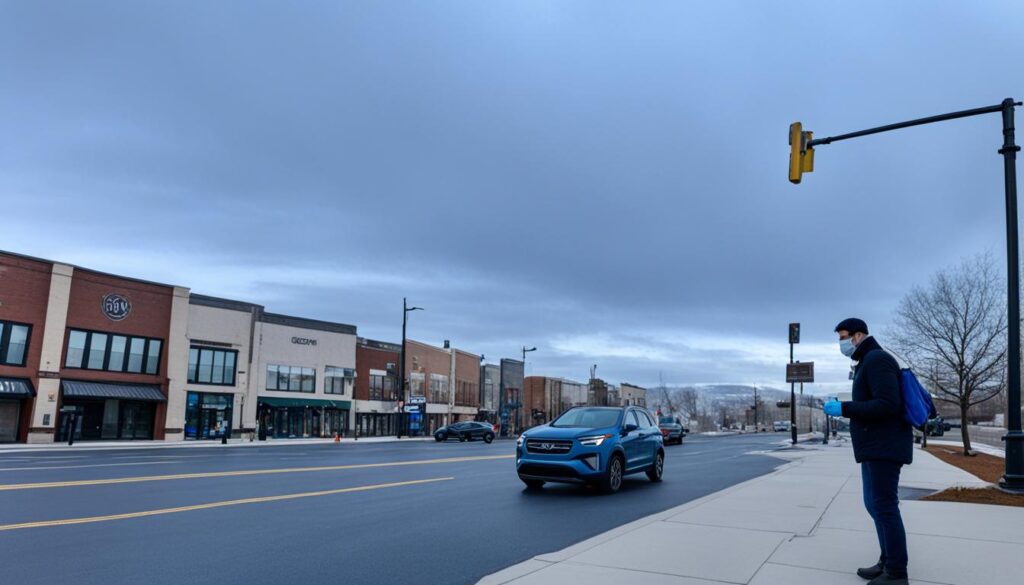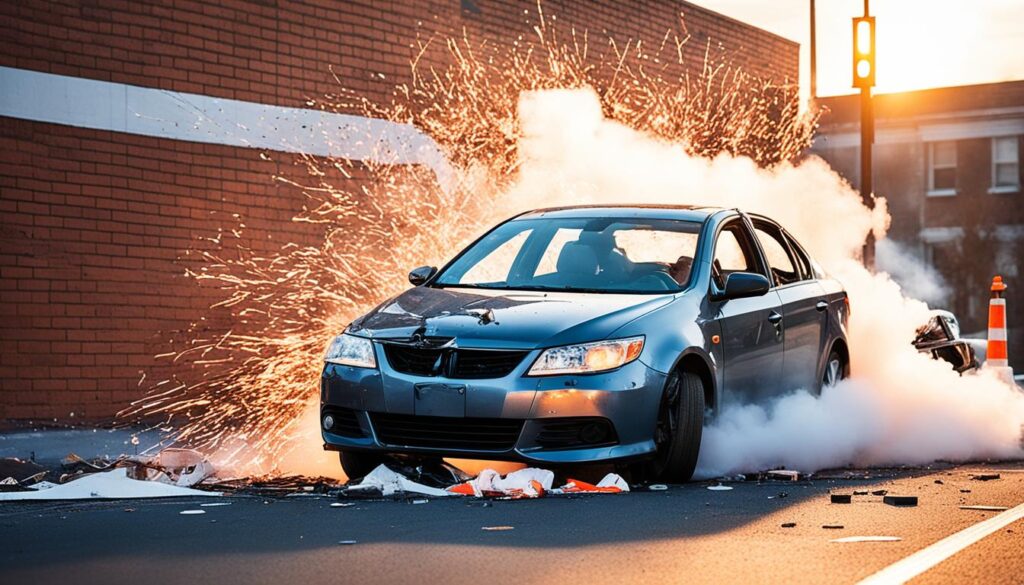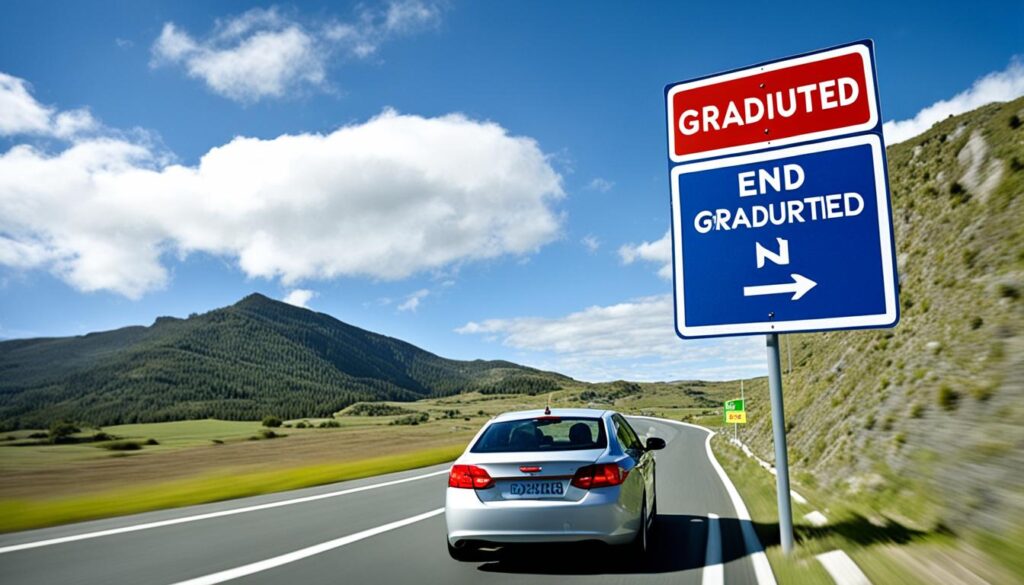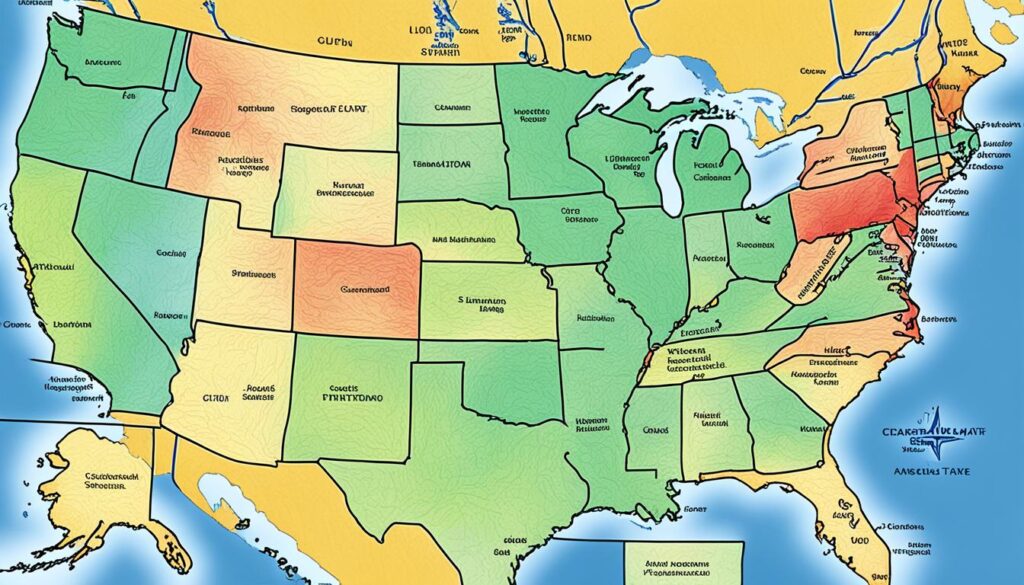The Graduated Driver License (GDL) program aims to provide new drivers with the opportunity to enhance their driving skills over time in safer environments. Under this program, certain restrictions are imposed on drivers under the age of 18, known as GDL restrictions.
But the question lingering in the minds of many is, do these GDL restrictions last forever? In this article, we will delve into the duration and details of the GDL program to provide you with a better understanding of these restrictions.
Stay with us as we explore the specific phases of the GDL program and the restrictions that come with them. Whether you are a young driver or a concerned parent, knowing the ins and outs of the GDL restrictions is vital for safe and responsible driving.
Understanding the GDL Program
The Graduated Driver License (GDL) program is an essential part of ensuring the safety of young drivers on the road. It is designed to gradually introduce them to the responsibilities of driving, providing a structured path towards obtaining a full privilege driver license. Let’s dive into the details of the GDL program to get a better understanding of how it works.
The Learner License Phase
The GDL program consists of two primary phases, starting with the Learner License phase. Individuals under 18 years of age who wish to obtain their driver license must first hold a valid learner license for a minimum of six months.
During this phase, aspiring drivers must complete a certain number of supervised driving hours and fulfill both classroom and behind-the-wheel portions of driver education. These requirements help them acquire the necessary knowledge and skills to become safe and responsible drivers.
The Provisional License Phase
Once individuals have met the learner license requirements and reached the age of 16, they become eligible to take the driving test and receive a provisional license. This marks the transition into the second phase of the GDL program.
The Provisional License phase allows young drivers to gain experience and independence behind the wheel while still having certain restrictions in place to ensure their safety. However, these restrictions are less stringent compared to the learner license phase.
The Importance of the GDL Program
The GDL program plays a crucial role in reducing the risk of accidents among new drivers. By gradually introducing them to the responsibilities and challenges of driving, it prepares them to navigate the roadways with confidence and competence.
Through the structured approach of the GDL program, young drivers gain essential experience, knowledge, and skills in a supervised environment. This not only enhances their driving abilities but also instills responsible habits that will benefit them throughout their lives.
“The GDL program aims to create safe and responsible drivers by providing them with the necessary education, training, and experience.” – Department of Motor Vehicles
Phase One: Learner License
In the Learner License phase of the Graduated Driver License (GDL) program, individuals under 18 years of age embark on their journey to becoming responsible and skilled drivers. This phase serves as an essential foundation for their driving education and experience.
During this phase, one of the key requirements is obtaining a learner license, which must be held for a minimum of six months. This allows young drivers to gradually familiarize themselves with the rules of the road and gain practical experience behind the wheel.
In accordance with the GDL program, learner license holders must also complete a certain number of supervised driving hours. This ensures that they have adequate practice and guidance before moving on to the next phase of the program.
Additionally, successful completion of both the classroom and behind-the-wheel portions of driver education is mandatory. These courses provide comprehensive instruction on traffic laws, defensive driving techniques, and essential skills that every responsible driver should possess.
It is important to note that the Learner License phase comes with specific restrictions to ensure the safety of young drivers during their initial stages of driving. These restrictions include:
- Limitations on nighttime driving: Learner license holders may not drive during certain nighttime hours, typically from midnight to 5:00 a.m. This restriction is in place to minimize the risk of accidents that may occur when visibility and overall driving conditions are compromised.
- Passenger limits: During this phase, learner license holders may be restricted in terms of the number of passengers they can carry. The exact limitations vary by state but commonly include restrictions on teenage passengers to minimize distractions and promote focused driving.
- Prohibited use of wireless communication devices: In many states, learner license holders are not allowed to use wireless communication devices while driving. This restriction underscores the importance of undivided attention on the road and minimizes the potential for distractions.
By adhering to these restrictions and actively participating in the Learner License phase, young drivers can acquire essential skills, knowledge, and experience to safely navigate the roads. These foundational aspects lay the groundwork for the subsequent phases of the GDL program, leading them towards becoming responsible and confident drivers.
| Phase One: Learner License Requirements | GDL Minimum Holding Period |
|---|---|
| Obtain a learner license | Minimum of six months |
| Complete supervised driving hours | Varies by state |
| Pass classroom and behind-the-wheel driver education | Mandatory |
Phase Two: Provisional License
Once the individual has completed the requirements of the Learner License phase and reached the age of 16, they can enter Phase Two and obtain a provisional license. This milestone allows young drivers to gain more independence and experience on the road. However, it is important to note that there are still specific restrictions in place during this phase to ensure the continued safety of the driver and others on the road.
One of the key requirements to obtain a provisional license is passing the GDL driving test. This test evaluates the driver’s knowledge of traffic laws, safe driving practices, and their ability to operate a vehicle safely. By successfully passing this test, young drivers demonstrate their readiness to drive independently while still adhering to the rules and regulations set for provisional license holders.
During the provisional license phase, there are several important restrictions that must be followed. These restrictions include:
- Limitations on nighttime driving: Provisional license holders may have restrictions on driving during certain hours, typically during late-night hours. These restrictions are in place to minimize the risks associated with driving at night, as visibility and other factors can make it more challenging for less experienced drivers.
- Passenger limits: To reduce distractions and potential risks, provisional license holders may have limitations on the number of passengers they can have in the vehicle. These restrictions are typically aimed at preventing situations where the driver may become overwhelmed by the presence of multiple passengers.
- Prohibited use of wireless communication devices: Another important restriction during the provisional license phase is the prohibition of using wireless communication devices while driving. This includes both handheld and hands-free devices, as they can be a significant distraction and increase the risk of accidents.
It is crucial for provisional license holders to abide by these restrictions to ensure their safety and the safety of others on the road. Violating these restrictions can lead to penalties and consequences, including fines, license suspensions, or the extension of the provisional license phase.
Table: Provisional License Restrictions
| Restrictions | Description |
|---|---|
| Limitations on nighttime driving | Provisional license holders may have restrictions on driving during certain hours, typically during late-night hours. |
| Passenger limits | Provisional license holders may have limitations on the number of passengers they can have in the vehicle. |
| Prohibited use of wireless communication devices | Provisional license holders are prohibited from using wireless communication devices while driving. |
GDL Restrictions during Phase Two
During Phase Two of the GDL program, individuals under 18 years of age face specific restrictions on their driving privileges to ensure their safety and the safety of others on the road. These restrictions include passenger limits, nighttime driving restrictions, and restrictions on the use of wireless communication devices.
Passenger Limits
One of the key restrictions during Phase Two is the passenger limit. Drivers under 18 years old are not allowed to have more than one passenger in the vehicle who is under the age of 21, unless they are immediate family members. This limitation helps minimize distractions and reduce the risk of accidents caused by peer pressure or excessive passenger activity.
Nighttime Driving Restrictions
Another restriction imposed during Phase Two is a limitation on nighttime driving. Drivers under 18 years old are not permitted to drive between midnight and 5:00 a.m., except for specific reasons such as work, school-related activities, or medical emergencies. By limiting nighttime driving, the GDL program aims to prevent fatigue-related accidents and reduce the exposure to higher-risk driving conditions.
Wireless Communication Device Restrictions
The use of wireless communication devices is also restricted during Phase Two of the GDL program. Drivers under 18 years old are prohibited from using wireless communication devices, including hands-free devices, until they reach the age of 18. However, exceptions are made for emergency situations. This restriction aims to minimize distractions and encourage focused driving, ensuring that young drivers develop safe habits from the beginning of their driving journey.
It is important for young drivers to adhere to these restrictions and understand the significance of responsible driving. By following these restrictions, young drivers can gain valuable experience and develop safe driving habits that will benefit them throughout their lives.
| Restrictions | Details |
|---|---|
| Passenger Limits | Only one passenger under 21 years old, unless it is a family member |
| Nighttime Driving | Driving prohibited between midnight and 5:00 a.m., except for specific reasons |
| Wireless Communication Devices | Prohibited until the driver reaches the age of 18, except in emergency situations |

Duration of GDL Restrictions
When it comes to GDL restrictions, many young drivers wonder, “How long do GDL restrictions last?” The duration of GDL restrictions can vary depending on the specific requirements of each state’s program. In general, individuals under 18 years of age will have these restrictions in place until they reach the age of 18 or complete a certain period of time, such as 12 months or until they obtain a full privilege driver license.
It is important to note that the exact duration may differ from state to state, as each state has its own set of regulations regarding GDL restrictions. To ensure that you have the most accurate information regarding the duration of GDL restrictions in your state, it is essential to consult the specific regulations provided by your state’s Department of Motor Vehicles (DMV) or equivalent authority.
State-Specific GDL Duration
While the general rule is that GDL restrictions last until the driver reaches the age of 18 or completes a certain period of time, it’s crucial to understand that each state can have its own unique requirements and timeframes. To give you an idea of the variations in GDL durations, here is a table showcasing the duration of GDL restrictions in three different states:
| State | Minimum Duration |
|---|---|
| New York | 12 months |
| California | 6 months |
| Florida | Until age 18 |
Please note that this table is for illustrative purposes only, and the duration of GDL restrictions can change over time. It is vital to refer to the official regulations in your state for the most up-to-date information.
Understanding the duration of GDL restrictions is essential for young drivers to plan and prepare themselves accordingly. By adhering to these restrictions and gaining valuable driving experience, young drivers can gradually improve their skills and become safer drivers on the road.
Breaking GDL Restrictions
When it comes to GDL restrictions, breaking the rules can have serious consequences. It’s important to adhere to these restrictions to ensure the safety of both the young driver and other road users. Violating GDL restrictions can result in penalties and various consequences, depending on the specific laws in your state.
Consequences of Breaking GDL Restrictions
One of the most common consequences of breaking GDL restrictions is the imposition of fines. The amount of the fine may vary based on the severity of the violation and the laws in your state. In addition to fines, other potential consequences include community service and even suspension of the restricted driver license.
Breaking GDL restrictions not only puts the young driver at risk but also endangers other road users. These restrictions are put in place to ensure a gradual learning process and minimize the chances of accidents. By disregarding GDL rules, individuals may face legal consequences and compromise the safety of themselves and others on the road.
Penalties for Violating GDL Restrictions
The penalties for violating GDL restrictions can vary, depending on the state and the specific circumstances of the violation. It is essential to familiarize yourself with the laws in your state to understand the potential penalties you may face.
In addition to fines, community service, and license suspension mentioned earlier, other possible penalties may include mandatory attendance at driver improvement programs, increased insurance rates, or even the requirement to restart the GDL program from the beginning.
It is crucial to remember that GDL restrictions are in place to protect young drivers and help them gain experience gradually. By respecting and following these rules, young drivers can enhance their skills and become safer drivers in the long run.

Graduating from GDL Restrictions
Graduating from GDL restrictions is an exciting milestone for young drivers. This momentous occasion typically occurs when they reach a certain age, complete the necessary requirements, or obtain a full privilege driver license. Once these conditions are met, the GDL restrictions will no longer apply, and the driver will have the same privileges as any other licensed driver.
Completing the GDL program and seeing the restrictions come to an end is a significant achievement. It signifies that the driver has successfully navigated the various phases and requirements of the program, demonstrating their competence and readiness to take on the responsibilities of the road.
However, it’s important to remember that even after graduating from GDL restrictions, safe driving habits should continue to be practiced. Obtaining a full driver license is not the end of the journey but rather the beginning of a lifetime commitment to responsible driving.
By completing the GDL program, young drivers have gained valuable experience and skills that will serve them well throughout their driving lives. It’s essential to continue following all traffic laws, being cautious on the roads, and staying vigilant to potential dangers. Graduating from GDL restrictions should be celebrated as a significant accomplishment, but it’s crucial to always prioritize safety and be mindful of others on the road.

Safe Driving Tips after Graduating from GDL Restrictions
- Always wear a seatbelt and ensure all passengers do the same.
- Avoid distractions while driving, such as using cell phones or other electronic devices.
- Observe and obey speed limits.
- Use turn signals to indicate lane changes and turns.
- Maintain a safe distance from other vehicles, keeping a 3-second following distance.
Remember, responsible driving is a lifelong commitment. Graduating from GDL restrictions is just the first step towards becoming a safe and experienced driver. Let’s continue to prioritize safety and make our roads safer for everyone.
GDL Programs in Different States
Each state has its own specific GDL program, with variations in requirements and restrictions. It’s crucial to understand the specific regulations in your state to ensure compliance with the GDL program requirements.
When it comes to GDL programs, there are several factors that can vary from state to state:
- Minimum entry age: The age at which individuals can begin participating in the GDL program may vary. Some states may allow individuals to start at 15, while others may require them to be at least 16 or older.
- Mandatory holding period: The amount of time individuals must hold a learner license before progressing to the provisional license stage can differ. Some states may require a minimum of six months, while others may have longer holding periods.
- Minimum supervised driving hours: The number of supervised driving hours individuals need to complete during the learner license phase can vary. While some states may require a specific number of hours, others may have a more flexible approach.
- Nighttime restrictions: The restrictions on nighttime driving can differ between states. Some states may have strict curfew hours, while others may allow more flexibility for licensed drivers under the age of 18.
- Passenger limits: The restrictions on the number of passengers that young drivers can have in the vehicle can vary. Some states may limit the number of non-family passengers, while others may allow more freedom.
These variations in GDL programs reflect the different approaches that states take to improve young driver safety. It is essential to familiarize yourself with the regulations in your state to navigate the GDL program successfully.
We should always remember that GDL programs are designed to protect young drivers and reduce the risk of accidents. Adhering to these programs can help ensure the safety of both the young driver and other road users.

State-by-State Comparison
| State | Minimum Entry Age | Mandatory Holding Period | Minimum Supervised Driving Hours | Nighttime Restrictions | Passenger Limits |
|---|---|---|---|---|---|
| State A | 15 | 6 months | 40 hours | 10:00 pm – 5:00 am | 1 non-family passenger |
| State B | 16 | 12 months | 50 hours | 11:00 pm – 6:00 am | 2 non-family passengers |
| State C | 16 | 9 months | 30 hours | 12:00 am – 5:00 am | No passenger restrictions |
As shown in the table above, there are notable differences in GDL program requirements and restrictions from state to state. These variations highlight the unique approaches that each state takes in shaping their programs to enhance young driver safety.
By staying informed about the GDL program specifics in your state, you can ensure compliance and contribute to safer roads for everyone.
Conclusion
The Graduated Driver License (GDL) program serves as an important tool in gradually introducing young drivers to the responsibilities of driving and reducing the risk of accidents. While GDL restrictions do not last forever, they are in place for a specific duration, typically until the driver reaches the age of 18 or completes a certain period of time. During this time, it is crucial for young drivers to adhere to these restrictions and consistently follow safe driving practices. By doing so, we can ensure the safety of both the young driver and other road users.
By implementing GDL restrictions, we create an environment where young drivers can develop the necessary skills and gain experience behind the wheel. These restrictions, such as passenger limits, limitations on nighttime driving, and restrictions on the use of wireless communication devices, are designed to mitigate the potential risks associated with inexperienced driving.
As young drivers progress through the GDL program and eventually graduate from these restrictions, it is important to remember that safe driving habits should always be maintained. The transition from the GDL program to full driving privileges is a significant milestone, but it does not mark the end of the responsibility to drive safely. It is crucial for all drivers, regardless of their licensing status, to continue practicing safe driving habits and adhere to all traffic laws.
Overall, the GDL program plays a crucial role in shaping young drivers into responsible and skilled individuals behind the wheel. By understanding and respecting the GDL restrictions, we can contribute to safer roads for everyone. Let us continue to prioritize the safety of all road users by embracing the principles of the GDL program and practicing safe driving habits throughout our lifetime.